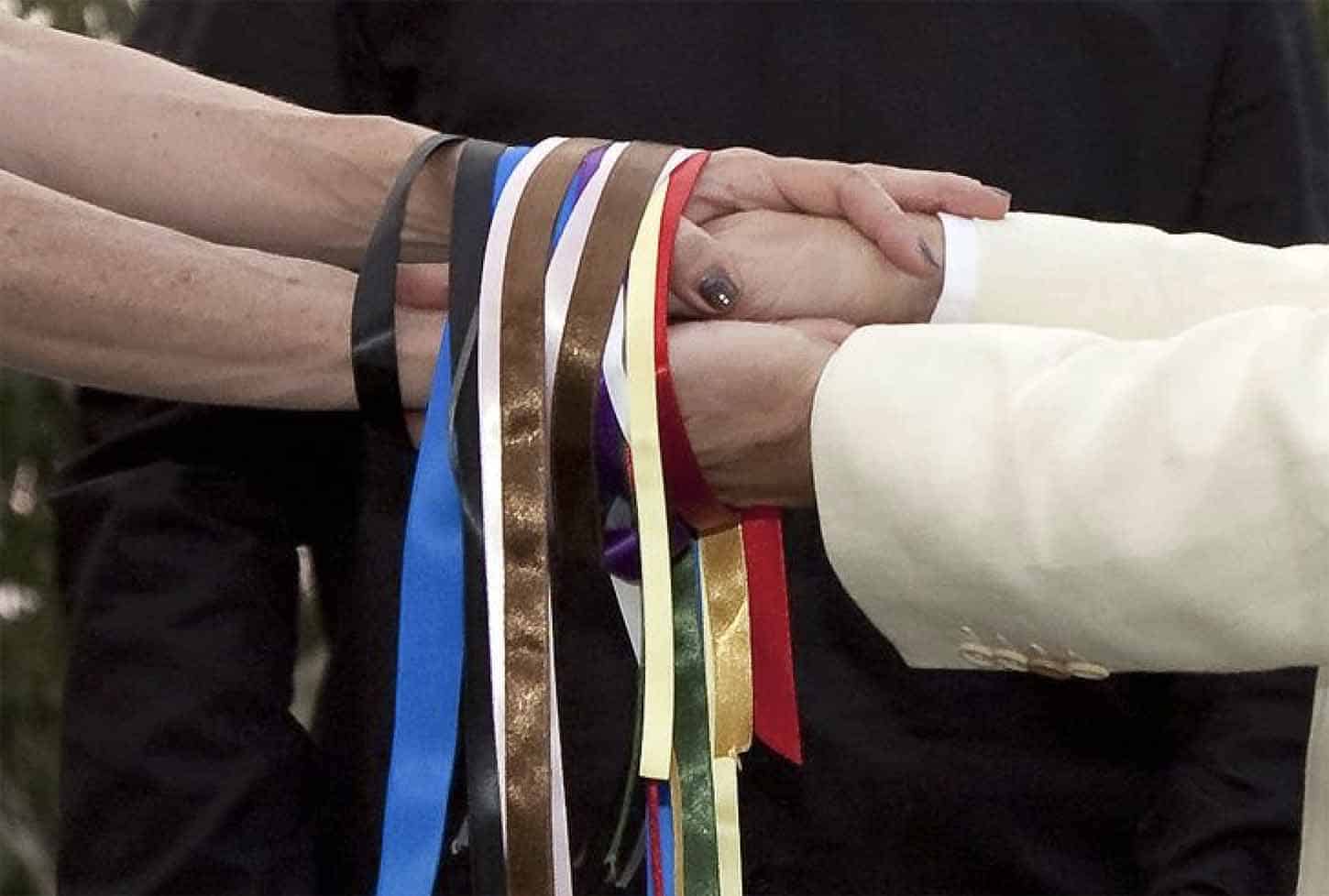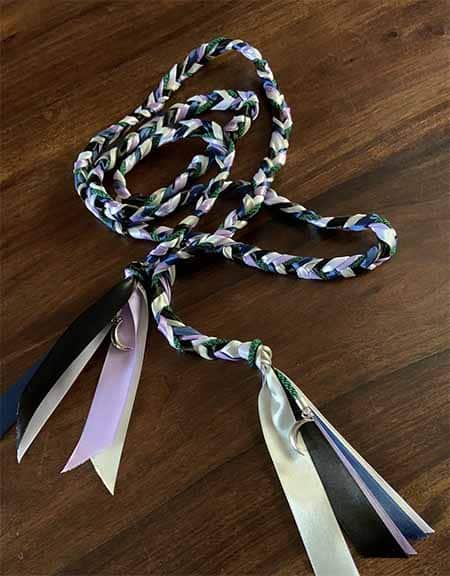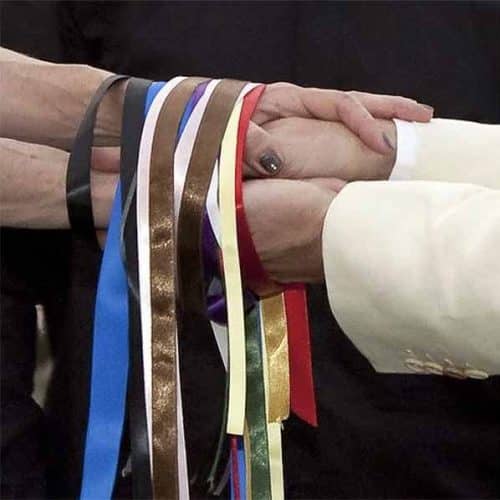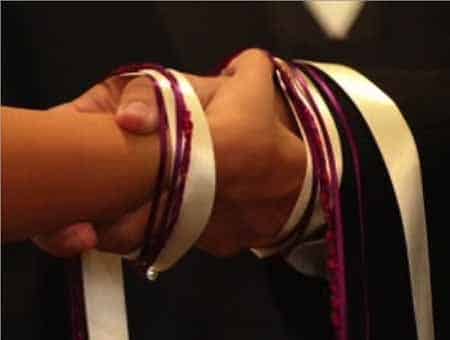
Handfasting, probably the oldest wedding custom we have, is an important part of many weddings. In recent years, its popularity has increased, and celebrants are mainly responsible for creating and leading handfasting ceremonies for non-Pagan couples.
What is a handfasting ceremony?
Originally a Pagan wedding custom, handfasting has been around for centuries. The name ‘Handfasting’ comes from the Old Norse term ‘handfesta’ meaning to bind in bargain. During a handfasting, the hands of the couple were bound together using a cord, rope or cloth, as the ceremony was carried out by an appointed person.
A Year and a day
Some information can be found depicting the ‘year and a day theory’. This relates to the couple having to live together for a year and a day after their handfasting. If they got on and wished to stay together, they did. If not, the knots tied during the handfasting were untied and the couple went their own separate ways. Whether this is fact or myth, we do not know. It makes a nice story though doesn’t it.
 Handfasting without religion
Handfasting without religion
Although deemed to be a Celtic Pagan wedding custom, handfasting is for anyone and everyone who desires to have one, regardless of any religious or nonreligious beliefs they may have. Different coloured individual ribbons are placed over the couples joined hands by the celebrant, or by their family or friends. The ends of the ribbons are then tied into a knot which must stayed tied for the duration of their relationship. Ribbons can also be braided together if one cord is preferred.
What are the meaning of the colours used in a handfasting ceremony?
Colours used during a handfasting ceremony are the personal choice of those the ceremony is for. Some choose their favourite colours, some choose the colours to match their décor, some choose symbolic colours based upon their given meaning. The internet has many different websites explaining the meaning behind the colours of handfasting ribbons and cords. Below are a sample of the various colours and their representations.

Orange: encouragement, attraction, kindness
Yellow: charm, confidence, balance
Green: fertility, prosperity, nurturing
Blue: tranquillity, patience, devotion,
Purple: strength, healing, health
Black: wisdom, vision, success
White: purity, concentration, peace
Grey: neutrality, balance
Pink: unity, truth, romance,
Brown: grounding, talent, home
Silver: protection, creativity, inspiration
Gold: wealth, intelligence, longevity
Handfasting vows
Including a handfasting within a wedding ceremony gives the option to say two different sets of vows; one set for the handfasting part, and the second set said before the couple exchange rings. Two sets of vows maybe too many for some, and if so, a handfasting can be followed with a handfasting poem such as the immensely popular ‘Blessing of the Hands’ by Rev. Daniel L. Harris
Blessing of the Hands by Rev. Daniel L. Harris
These are the hands of your best friend, young and strong and full of love for you, that are holding yours on your wedding day, as you promise to love each other today, tomorrow, and forever.
These are the hands that will work alongside yours, as together you build your future.
These are the hands that will passionately love you and cherish you through the years, and with the slightest touch, will comfort you like no other.
These are the hands that will hold you when fear or grief fills your mind.
These are the hands that will countless times wipe the tears from your eyes; tears of sorrow, and tears of joy.
These are the hands that will tenderly hold your children.
These are the hands that will help you to hold your family as one.
These are the hands that will give you strength when you need it.
And lastly, these are the hands that even when wrinkled and aged, will still be reaching for yours, still giving you the same unspoken tenderness with just a touch.
Handfasting is memorable and meaningful
Handfasting is a memorable and meaningful custom which can also be included within a renewal of vows ceremony. It is a binding of unity and commitment. Some even include them within a baby naming ceremony, making a commitment to the child as well as to each other.
All members of the United Kingdom Society of Celebrants who complete either the Certificate in Family Celebrancy, or the Diploma in Family and Funeral Celebrancy are trained to create and lead a meaningful handfasting. Further information on becoming a celebrant can be found on our courses pages.



 Handfasting without religion
Handfasting without religion